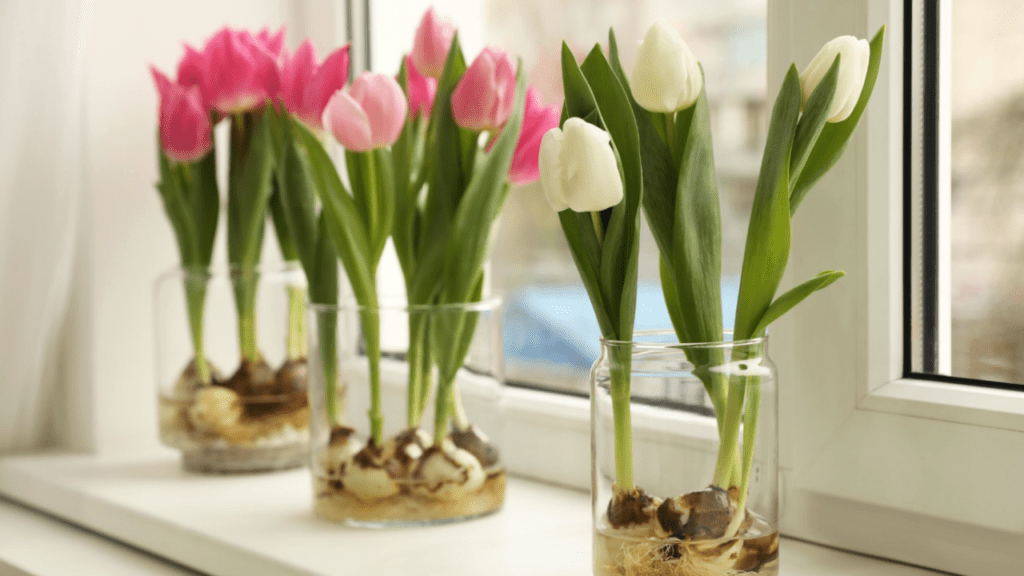
Indoor Bulb Plants: Bringing Springtime Blossoms to Your Home Year-Round
As the crisp autumn air sets in and leaves begin to change, the promise of spring flowers can feel like a distant memory. But what if you could bring the vibrant colors and delightful fragrances of springtime indoors, all year long? Enter the enchanting world of indoor bulb plants! These botanical marvels offer a unique way to enjoy the beauty of spring blooms, even when harsh weather reigns supreme outdoors.
While outdoor gardens burst into color with the arrival of spring. There’s no reason why you can’t enjoy the beauty of blossoms indoors throughout the year. Indoor bulb plants offer a delightful solution, bringing the charm and fragrance of springtime flowers right into your home. Whether you’re longing for the cheerful blooms of tulips, daffodils, or hyacinths, indoor bulb plants allow you to create a vibrant and inviting indoor garden that brightens even the dreariest of days.
Table of Contents
ToggleIntroduction to indoor bulb plants
As winter blankets the outdoor landscape in frost and snow, many gardeners yearn for the vibrant colors and sweet scents of springtime blooms. Fortunately, with indoor bulb plants, you can bring the essence of spring right into your home, regardless of the season outside. Indoor bulb plants, also known as forced bulbs, are a delightful way to enjoy the beauty of flowers indoors during the colder months.
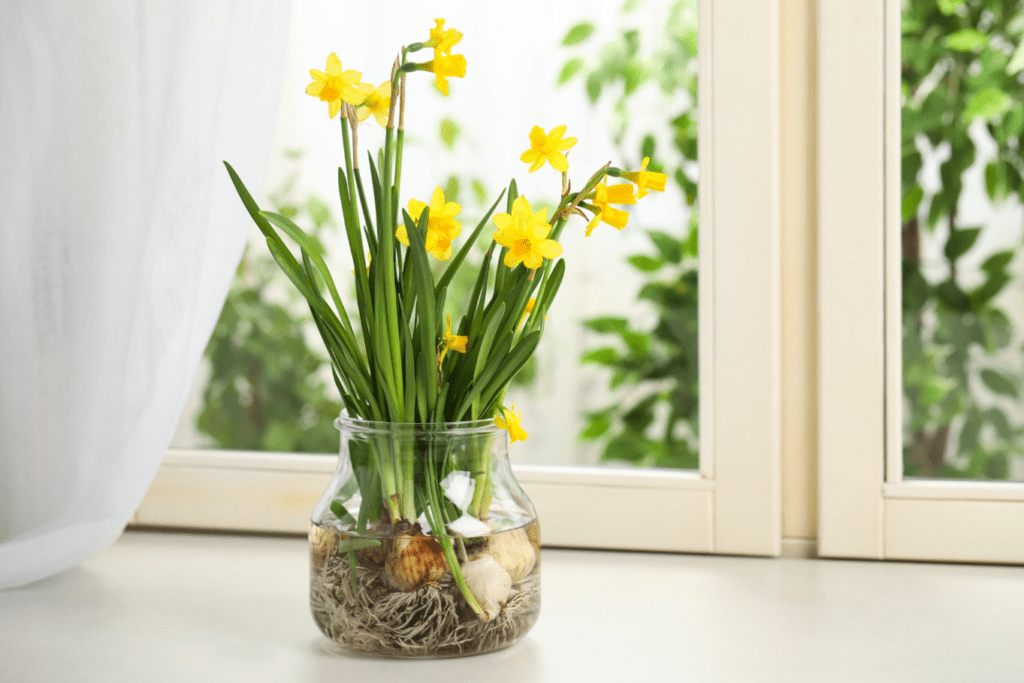
These bulbs, specially prepared to bloom earlier than they would naturally. It offers a burst of color and fragrance that brightens any indoor space. From the classic elegance of tulips to the cheerful charm of daffodils and the intoxicating scent of hyacinths, indoor bulb plants come in a variety of shapes, sizes, and colors, allowing you to create your own indoor garden oasis.
In this guide, we’ll explore the enchanting world of indoor bulb plants, from popular varieties to care tips and creative display ideas. Whether you’re a seasoned gardener looking to expand your collection or a newcomer eager to bring a touch of springtime magic into your home, join us on a journey into the captivating realm of indoor bulb plants.
Types of indoor bulb plants
A Spectrum of Springtime Delights
Indoor bulb plants come in a wide variety, offering something for every taste and preference. Here are some popular choices to brighten your home:
- The Classic Amaryllis: Amaryllis bulbs are renowned for their stunning, trumpet-shaped blooms that come in a vibrant array of reds, whites, pinks, and even bi-colors. With proper care, these low-maintenance beauties can reward you with spectacular blooms year after year.
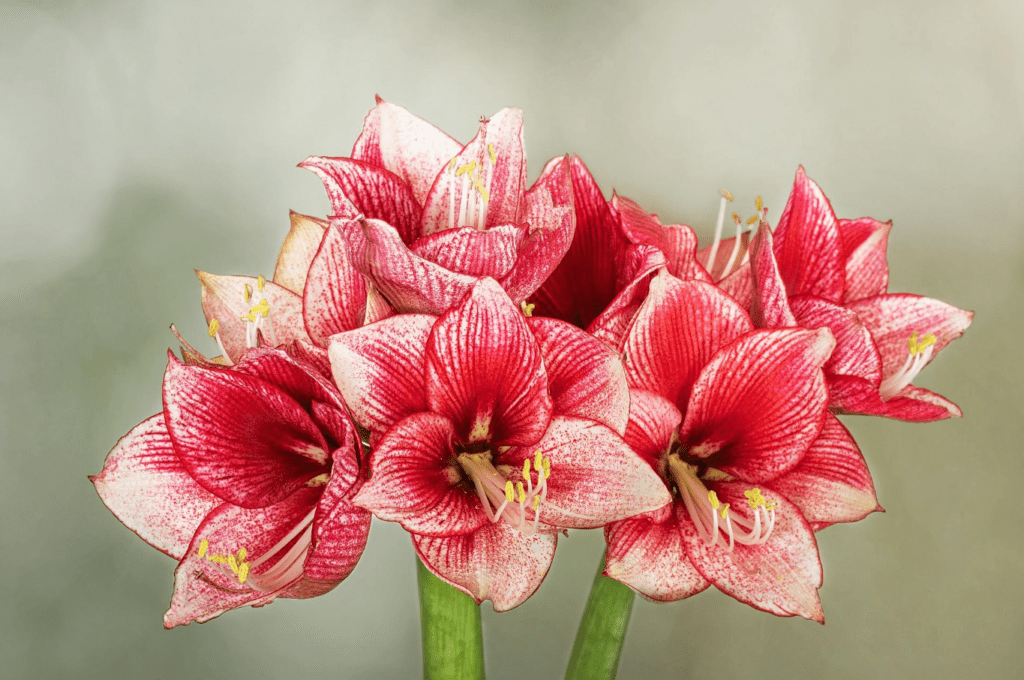
- Daffodils for Cheer: Bring a touch of sunshine indoors with cheerful daffodils. These iconic spring flowers boast cheerful yellow blooms and lush green foliage, adding a touch of joy to any space.
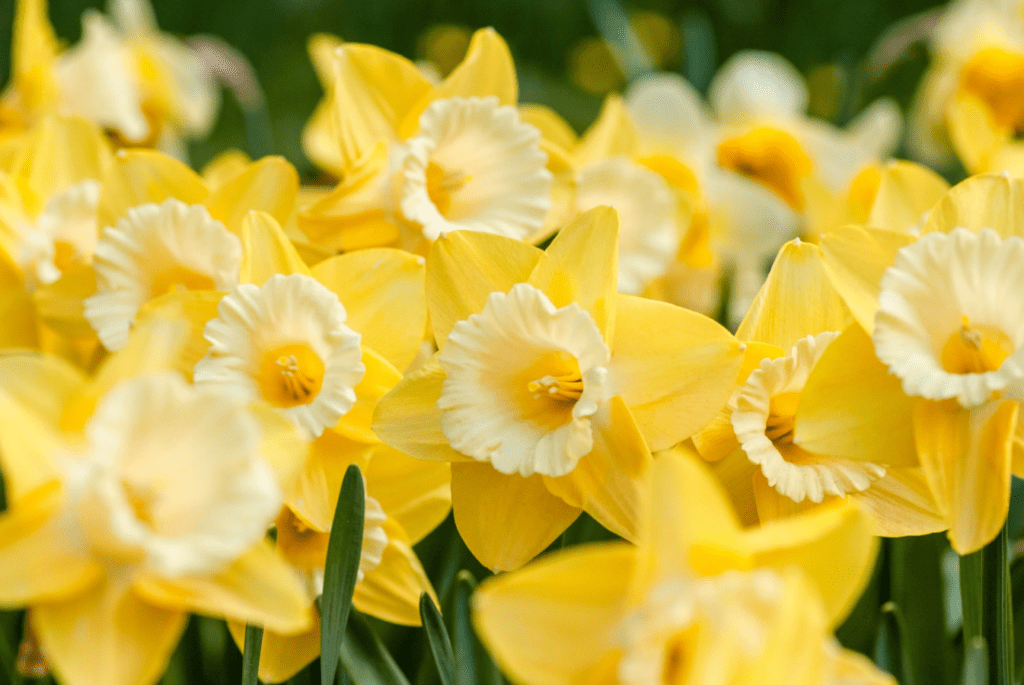
- Hyacinths: Fragrance and Flair: Hyacinths aren’t just visually captivating with their vibrant purple, pink, or white blooms, but they also fill the air with their intoxicating fragrance. These fragrant beauties are perfect for adding a touch of springtime magic to your home.
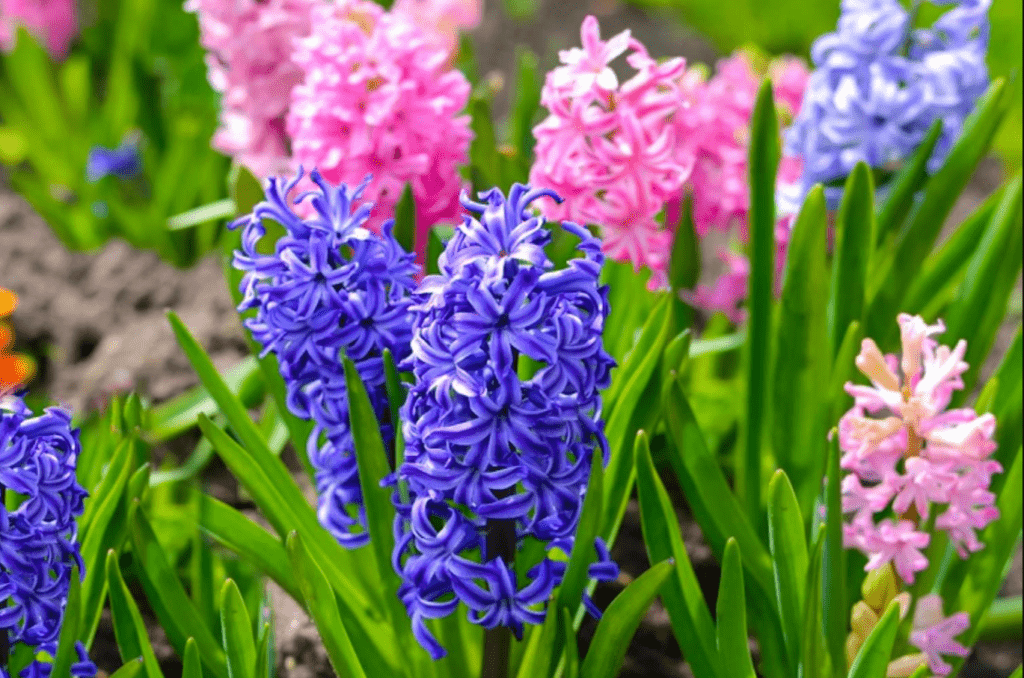
- Tulips in a Rainbow of Colors: Who can resist the timeless elegance of tulips? Indoor bulb kits allow you to enjoy the classic beauty of tulips in a variety of colors, from soft pastels to bold reds and oranges.
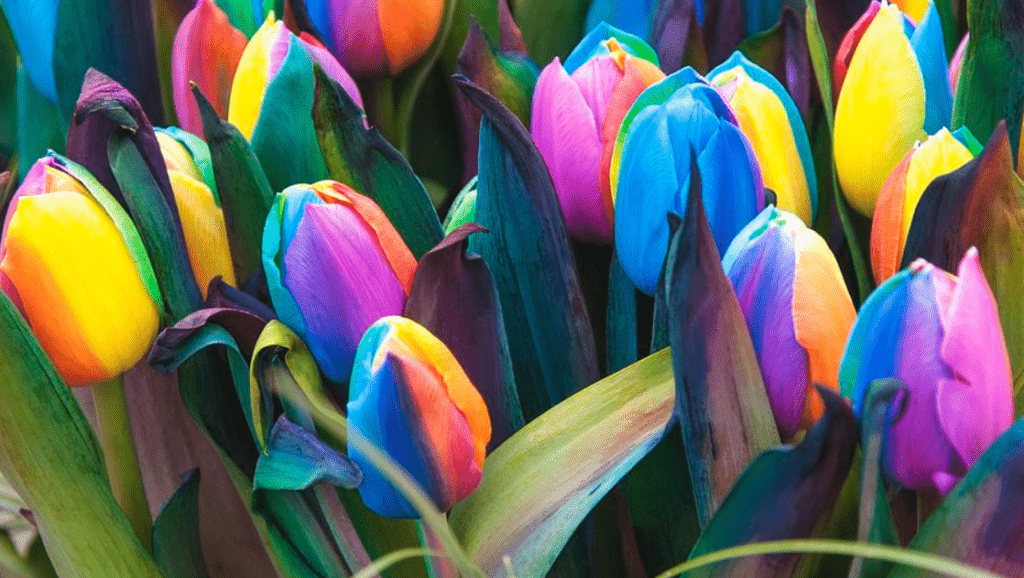
- Paperwhites: Effortless Elegance: Paperwhites are a low-maintenance option for busy plant enthusiasts. These fragrant bulbs require minimal care and produce clusters of delicate white blooms, perfect for adding a touch of winter cheer to your home.
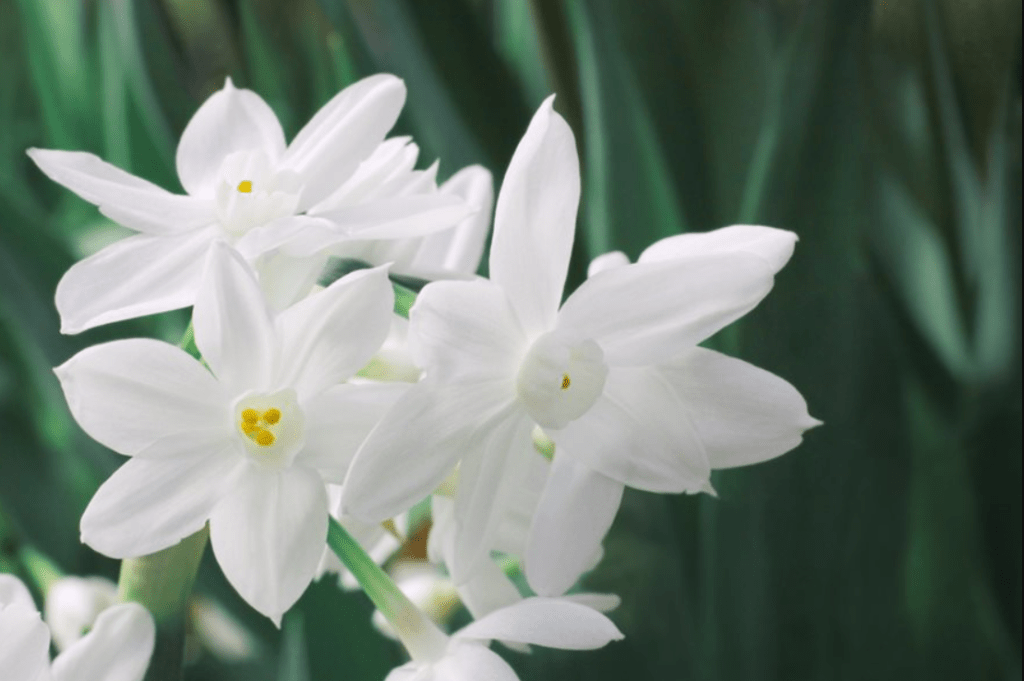
- Crocus: These vibrant little flowers come in a range of colors like purple, yellow, and white, and are a cheerful way to welcome spring indoors.
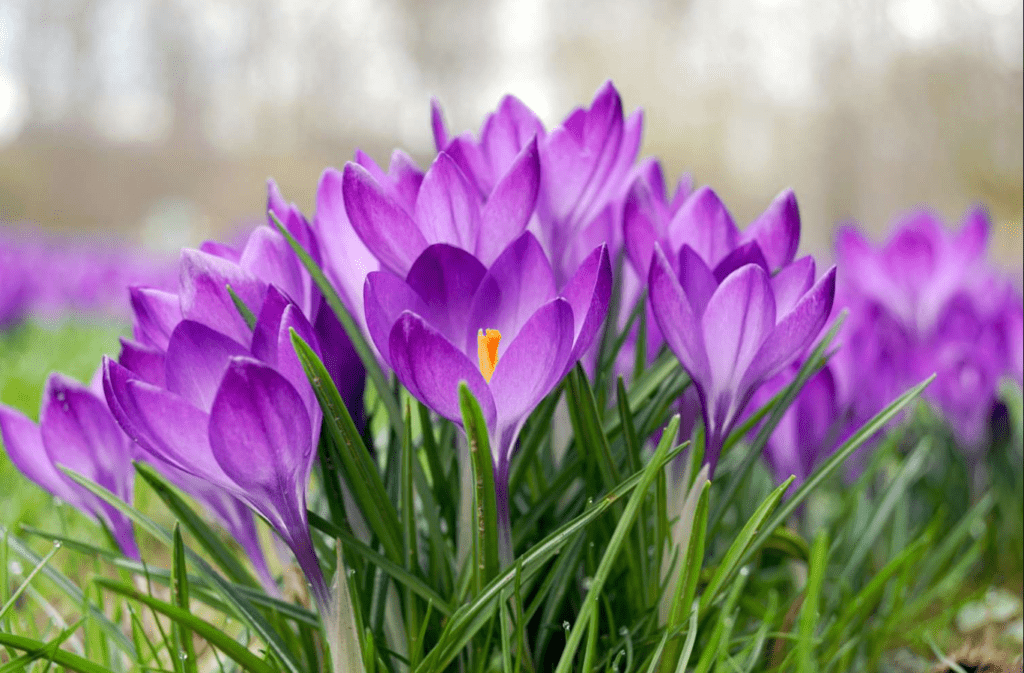
- Muscari (Grape Hyacinth): These tiny grape-like clusters of flowers come in shades of blue, purple, and white and add a touch of whimsy to any indoor space.
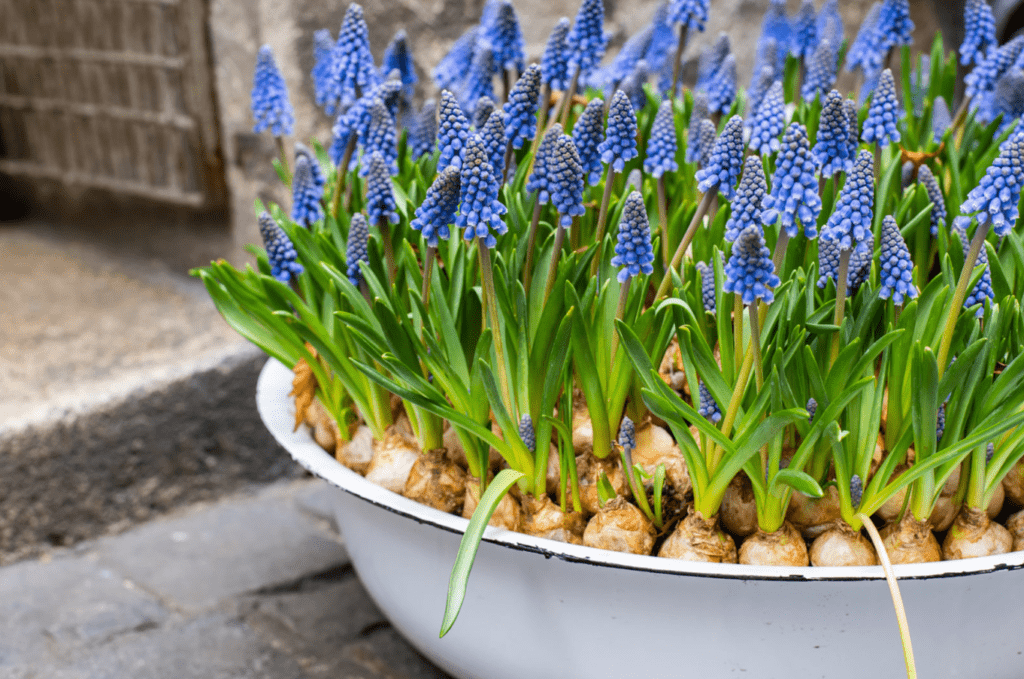
- Freesia: These fragrant flowers boast trumpet-shaped blooms in a variety of colors, including white, yellow, pink, and purple. They fill the room with a sweet scent and add a touch of elegance to your home.
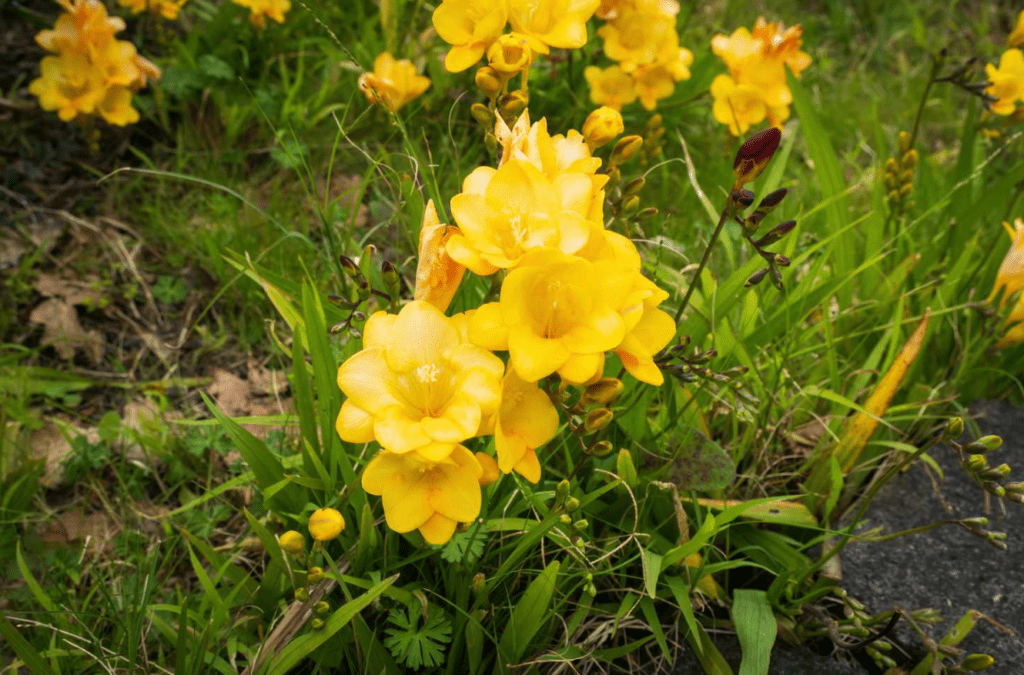
The Magic of Forcing Bulbs
While some bulbs flower naturally indoors, many require a period of cold temperatures, known as “forcing,” to initiate bloom production. This process mimics the natural chilling they would experience outdoors during winter. The specific chilling requirements vary depending on the bulb variety, so be sure to research the needs of your chosen plant.
Tips for planting and caring for indoor bulb plants
The arrival of autumn signifies a shift in the natural world. But that doesn’t mean you have to say goodbye to springtime blooms! Indoor bulb plants offer a delightful way to enjoy vibrant flowers and captivating fragrances throughout the year. With proper planting and care, these botanical wonders can transform your home into a haven of springtime cheer.
Choosing Your Bulbs
- Selection is Key: Not all bulbs are created equal. Opt for bulbs specifically labelled for indoor forcing, as they’ve been pre-treated for optimal bloom production indoors.
- Healthy is Happy: Choose firm, blemish-free bulbs that feel heavy for their size. Avoid any bulbs that are soft, mushy, or moldy.
- Timing Matters: The ideal planting time depends on the bulb variety and your desired bloom time. Research the specific needs of your chosen bulbs to ensure proper timing.
Planting Essentials
- Potting Up: Select a pot with drainage holes slightly larger than the bulb itself. This allows for proper drainage and prevents root rot.
- Well-Draining Mix: Use a high-quality potting mix specifically formulated for bulbs. These mixes are typically lightweight and well-draining, providing optimal aeration for the bulbs.
- Planting Position: Place the bulb with the pointed end facing upwards and cover it partially with potting mix, leaving about a third of the bulb exposed.
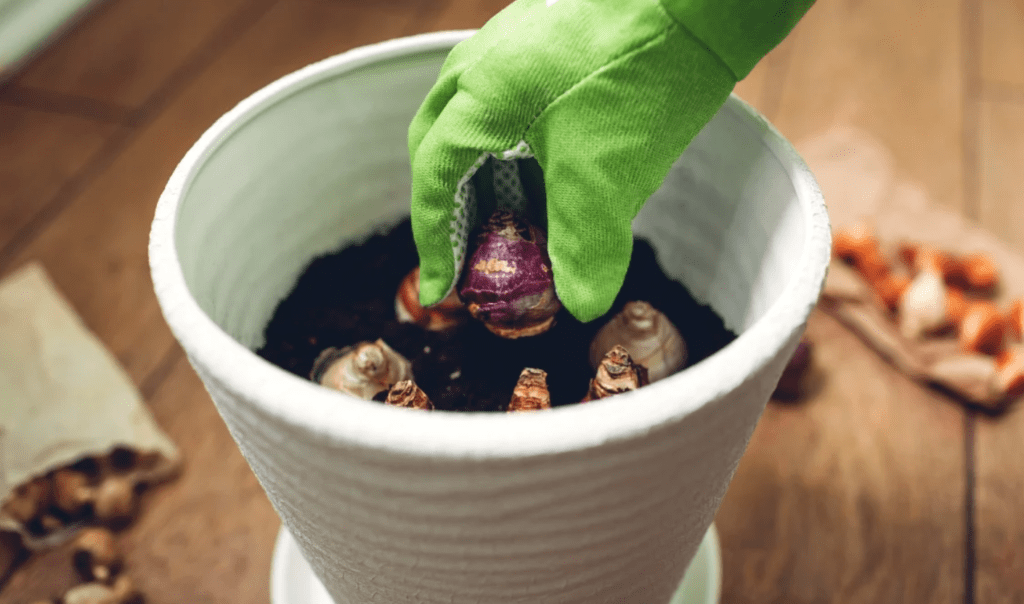
Watering Wisely
- Moisture Matters: After planting, water the pot thoroughly until water drains from the drainage holes.
- The Waiting Game: Resist the urge to water excessively! Most bulbs require a period of cool, moist soil to initiate root growth. Water sparingly during this time, only when the top inch of soil feels dry to the touch.
- Light It Up (Gradually): Once you see signs of growth, gradually introduce your bulbs to bright, indirect sunlight. Avoid harsh direct sun, which can scorch the foliage.
Temperature Talk
- Chilling Out (For Some): Many bulbs require a period of cold temperatures (around 40-50°F) to simulate winter and trigger bloom production. Research the specific chilling requirements of your chosen bulb variety. You can achieve chilling by placing the potted bulbs in a cool garage, basement, or even a refrigerator (not the crisper drawer!).
- Warm Welcome: Once the chilling period is complete, move your bulbs to a cool room (around 60-65°F) with bright, indirect sunlight. This will encourage bud formation and blooming.
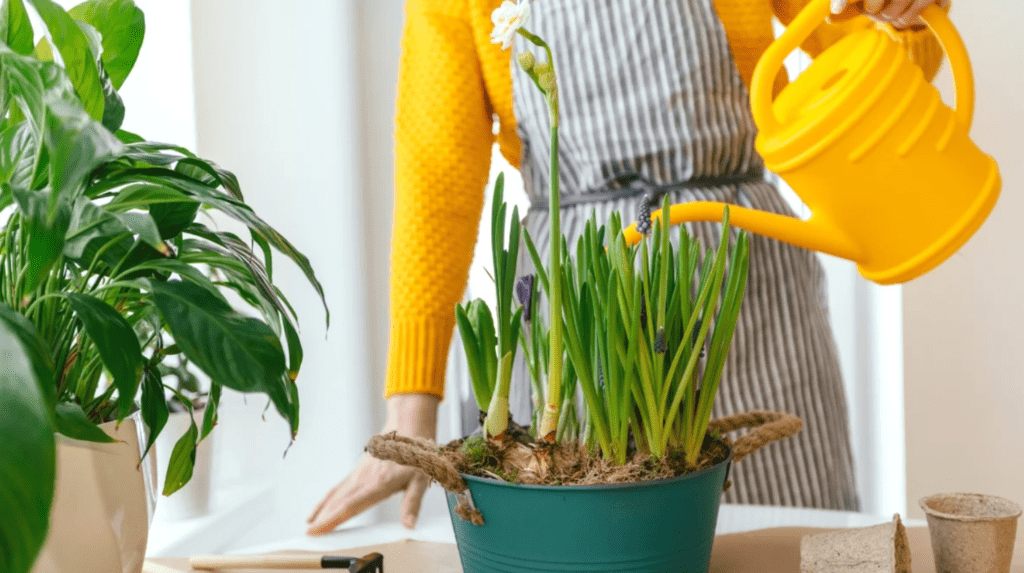
Enjoying the Blooms and Beyond
- Blooming Beauty: Once your bulbs erupt in a vibrant display of flowers, revel in the beauty! The exact bloom time will vary depending on the bulb variety and planting time.
- Faded Beauty: After the blooms have faded, you can either enjoy the foliage for a while or deadhead (remove) the spent flowers.
- Storing for Next Season: If you’d like your bulbs to flower again next year, allow the foliage to die back naturally. Then, carefully dig up the bulbs, remove any dead foliage, and store them in a cool, dry place with good air circulation until planting time the following season.
Bonus Tips:
- Rotate Your Pots: Gently rotate your pots periodically to ensure even growth, as bulbs naturally reach for light.
- Fertilize Sparingly: Avoid over-fertilizing your indoor bulb plants. A diluted dose of balanced fertilizer once a month during the growth period is sufficient.
- Grouping Magic: Create a stunning display by grouping pots of various bulb varieties with different bloom times. This will extend your indoor springtime experience!
By following these tips and providing your indoor bulb plants with the right care. You can enjoy a kaleidoscope of colors and delightful fragrances throughout the year. So, embrace the magic of bulbs and transform your home into a vibrant haven that celebrates spring, even when winter reigns supreme outdoors!
Creating a colorful and vibrant indoor garden
As the seasons change and outdoor landscapes transition into winter’s embrace, there’s no need to bid farewell to the beauty of blooming flowers. With the magic of bulb plants, you can create a colorful and vibrant indoor garden. That brings the joy of springtime right into your home, no matter the weather outside. From the graceful elegance of tulips to the cheerful charm of daffodils and the intoxicating fragrance of hyacinths, bulb plants offer a dazzling array of colors, shapes, and scents to elevate your indoor space.
Choosing the Right Bulb Plants:
When selecting bulb plants for your indoor garden, consider the varieties that thrive in indoor conditions and complement your décor style. Tulips, daffodils, hyacinths, and crocuses are popular choices for indoor forcing, offering a stunning display of colors and blooms. Look for bulbs that are firm and free from mold or damage, as healthy bulbs will produce the best results.
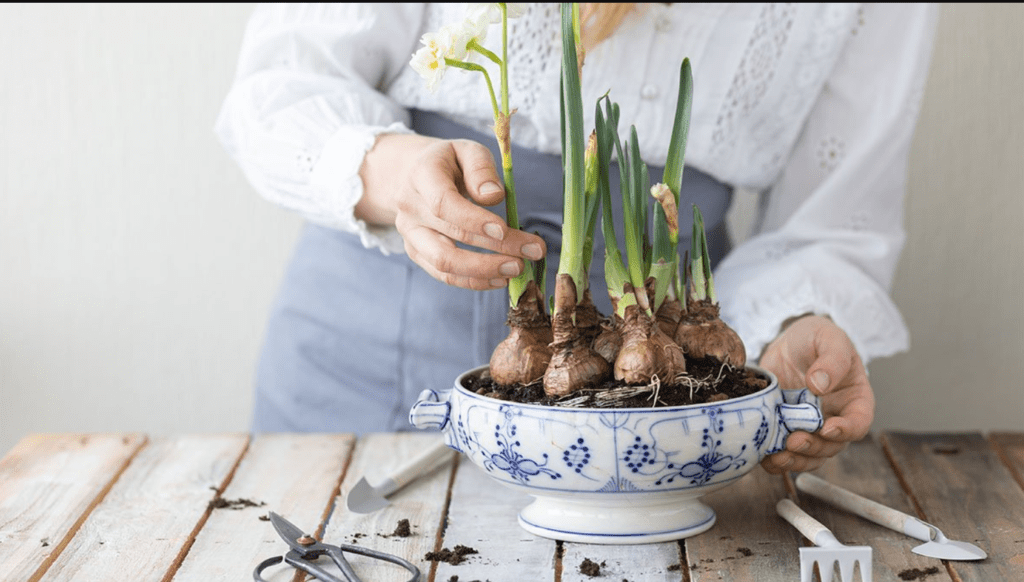
Planting and Potting:
To create your indoor garden, start by planting your bulb plants in containers or pots filled with well-draining potting mix. Choose containers with drainage holes to prevent waterlogging, and plant bulbs at the appropriate depth according to the instructions provided for each variety. You can plant bulbs closely together for a dense display of blooms or space them out for a more natural look.
Benefits of bringing springtime blossoms into your home
Springtime evokes images of vibrant flower meadows, sweet floral fragrances, and a sense of renewal. But what if you could capture the essence of spring and bring it indoors, even when harsh weather reigns supreme outdoors? Enter the enchanting world of bulb plants – botanical marvels that offer a multitude of benefits beyond simply bringing springtime blossoms into your home.
A Burst of Color Therapy
- Mood-Boosting Magic: As the days grow shorter and skies turn gray, the vibrant colors of blooming bulbs can have a powerful impact on our mood. Studies suggest that surrounding ourselves with colors like yellow, pink, and orange can elevate mood, reduce stress, and promote feelings of joy. Bulb plants, with their diverse color palette, act as natural mood-boosters, transforming your home into a more uplifting and cheerful space.
Fragrance for the Senses
- Aromatherapy at Home: Certain spring bulbs, like hyacinths and freesias, are renowned for their intoxicating fragrances. These natural air fresheners not only fill your home with delightful scents but also offer potential aromatherapy benefits. Studies suggest that specific floral scents, like lavender or hyacinth, can promote relaxation and reduce anxiety.
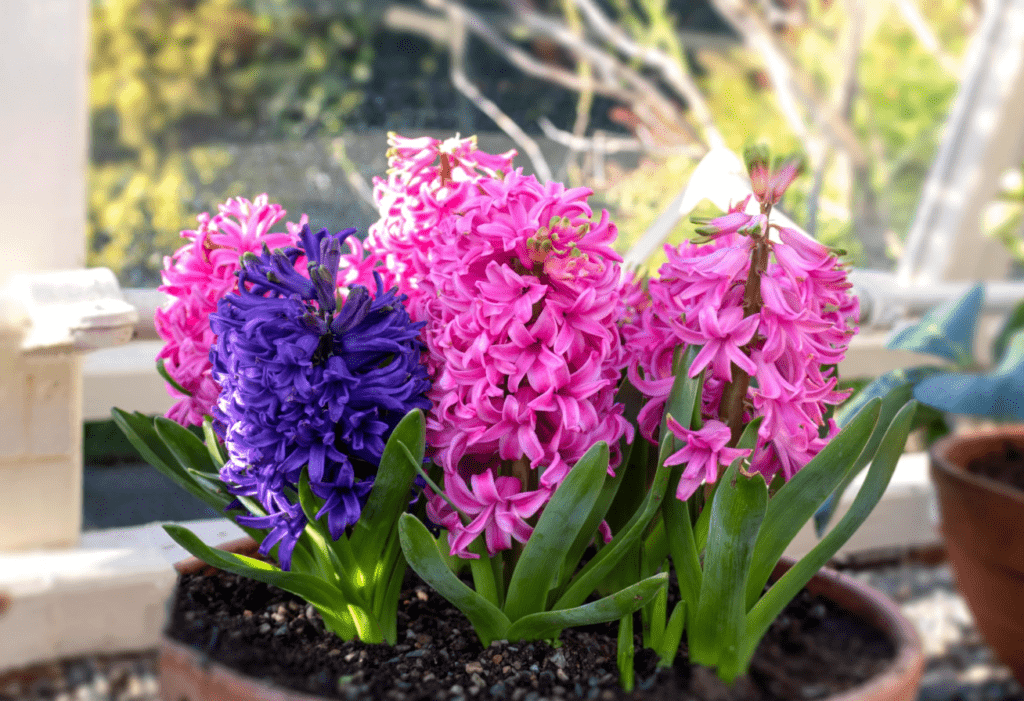
A Celebration of Renewal
- Symbolic Significance: Spring is a time of rebirth and new beginnings. Bulb plants, with their life cycle of dormancy followed by vibrant blooms, embody this very spirit. Nurturing these bulbs and witnessing their transformation from a seemingly lifeless bulb to a stunning flower. It can be a reminder of the cyclical nature of life and the potential for growth and renewal, even in the midst of winter.
A Gateway to Nature
- Connecting with the Outdoors: During colder months, when venturing outside becomes less frequent. Bulb plants offer a beautiful connection to the natural world. Caring for them and witnessing their growth can evoke feelings of peace and tranquility. It’s similar to those experienced when spending time outdoors.
Low-Maintenance Marvels
- Effortless Beauty: Unlike many flowering houseplants, bulb plants require minimal ongoing care. Most require a period of cold followed by a well-timed planting. Then it rewards you with spectacular blooms with minimal watering or fertilizing needed. This makes them ideal for busy individuals who still yearn for a touch of springtime beauty in their homes.
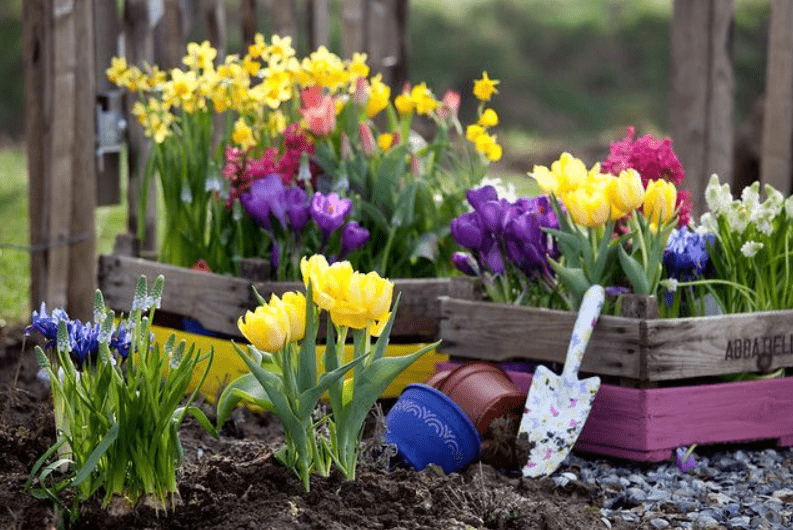
A Seasonal Spectacle
- Planning for the Future: Unlike traditional houseplants that offer year-round greenery. Bulb plants provide a burst of color and fragrance during their blooming season. However, this doesn’t diminish their appeal. The anticipation of their arrival and the planning involved in selecting varieties with staggered blooming times. It allows you to create a season-long celebration of spring, with new blooms emerging to replace the fading ones.
Beyond the Initial Bloom
- The Gift of Giving: Many bulb varieties, like amaryllis, can be coaxed into reblooming the following season with proper care. This allows you to enjoy their beauty year after year. Even share the joy of spring with loved ones by gifting them bulbs to plant themselves.
By incorporating bulb plants into your home, you’re not just bringing in springtime blossoms. You’re unlocking a treasure trove of unexpected benefits. From mood-boosting properties and captivating fragrances to a connection with nature and the joy of witnessing renewal. These botanical gems offer a unique way to enhance your well-being. It creates a vibrant haven that celebrates the spirit of spring, all year round. So, embrace the magic of bulbs and let them transform your home into a haven of springtime cheer!
Frequently Asked Question (FAQ)
Indoor bulb plants are flowering plants that grow from bulbs and can be cultivated indoors. Common examples include tulips, daffodils, hyacinths, and amaryllis. These plants are popular for their vibrant blooms and can be forced to flower indoors during the winter months.
Plant bulbs in well-draining pots with good-quality potting soil. Position the bulbs with the pointed end up and cover them with soil, leaving just the tip exposed. Water thoroughly after planting.
Start planting in late fall to early winter, allowing the bulbs to chill for several weeks in a cool, dark place before moving them to a warmer environment for blooming.
Keep the soil moist but not waterlogged, place the pots in a sunny spot, and maintain moderate indoor temperatures. Once the flowers bloom, move them to a cooler spot to prolong flowering.
Some bulbs, like amaryllis, can be reused. After flowering, allow the foliage to grow and store the bulbs in a cool, dry place over the summer. Replant in the fall for another blooming cycle.
Lack of proper chilling time, insufficient light, or overwatering can prevent blooming. Ensure bulbs are chilled for the recommended time, provide adequate sunlight, and avoid overwatering.
Popular choices include tulips, daffodils, hyacinths, amaryllis, and paperwhite narcissus. These bulbs are easy to force and offer a variety of colors and scents.
The bloom time varies by species, but most indoor bulb plants will bloom for 2-4 weeks under optimal conditions.
